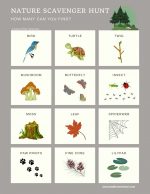Early Elementary Hands-On Science
How do I ignite a love and wonder for STEM in our homeschool?
What are our favorite experiments?
How do you create young critical thinkers?
Tune in this week while we discuss these topics and more!

Click PLAY Button Below or Subscribe and listen on your favorite podcast platform:
Podcast Episode 030.
Brand New to Homeschooling?
GETTING START PAGE >>
Kindergarten Page >>
High School Series >>
Scroll down for 3 FREE Science Freebies
Show Notes
Spark your children’s curiosity and imagination by creating an environment with hands-on exploration in your homeschool.
The acronym STEM stands for science, technology, engineering, and mathematics. We’ve actually been learning all of these subjects since our students were babies so what is so special about STEM? Traditionally, STEM takes the 4 pillars (science, technology, engineering, and math) and combines them into an interdisciplinary approach of curiosity and inquiry and hands-on, problem and project-based learning.
When you begin formal education in your homeschool, you may approach each of these subjects individually-we often did math daily at a certain time, science, a couple days a week, etc. With STEM you have an opportunity to combine these subjects and integrate them in a way that makes these skills more useful in everyday life. This integration of STEM subjects can result in kids that are able to think differently by harnessing a powerful combination of knowledge, critical thinking skills, and drive to improve and excel.
By incorporating STEM into our homeschool, we teach our kids to approach problems using scientific methods and we help them to learn analytical and information gathering skills. These valuable skills can be applied to all kinds of subjects and life situations.

NATIONAL GEOGRAPHIC Earth Science Kit – Over 15 Science Experiments & STEM Activities for Kids, Crystal Growing, Erupting Volcanos, 2 Dig Kits & 10 Genuine Specimens, a Great STEM Science Kit:

STEM is hands-on which makes it interesting and fun and it can inspire students to be more innovative and creative and to want to invent or build things. STEM helps students develop critical thinking skills to solve real world problems, and inspires them to become lifelong learners, which we talk about being our ultimate homeschooling goal here all the time.
Incorporating STEM (Science, Technology, Engineering, and Math) skills in your homeschool can also help kids become more competent, innovative, and independent. It also makes them more adaptable to technology as it improves and changes. This is especially vital when it comes to future employment opportunities in a world that is constantly evolving. It also makes them perfectly capable when it’s time to make a repair on a household appliance.
LEGO Education WeDo 2.0 was a favorite with my kids. It really helped them learn how to program and ignited a love for STEM.
It comes with a Smarthub, motors, sensors, software. Everything you need to program the Legos you build!
STEM Labs for Middle Grades – (5th – 8th)

The Bureau of Labor Statistics:
- Between 2017 and 2027, the number of STEM jobs will grow 13 percent, compared to 9 percent for non-STEM jobs.
- The average median hourly wage for STEM jobs is $38.85, compared to the median earnings for all other types of jobs in the US, which is $19.30.
- Out of 100 STEM occupations, 93% of them had wages above the national average.
- Millions of STEM jobs go unfilled due to lack of qualified candidates.
As homeschoolers, we have this unique opportunity where we can choose to focus our energies on building critical thinkers and preparing our kids for amazing opportunities and fulfilling careers down the line, as well as creating creative and innovative global citizens. Our children really are the future.
How do I ignite a love and wonder for STEM in our homeschool? (6:02)
Like with many things homeschool- you don’t have to be an expert in these subjects in order to teach them. I encourage you to learn right alongside your children. It’s important to remember that your kids are watching you all the time. You are modeling behavior for them. Do you show a curiosity to try to find the answer and problem solve? What do you do when you notice something like a door handle in your house loose? Are you proactive and go get a screwdriver and try to figure out what is wrong and fix it? This is the kind of skill that you want your children to possess. Teach them to work through things and work with them Problem-solving. This kind of education goes well beyond a worksheet.
Extreme Geyser Tube – Science Kit for Kids – Mentos & Soda Lab Experiment: You can get a geyser over 20 FEET TALL:

You can find all kinds of opportunities for outsourced classes, science museum workshops, scripted curriculum, extracurricular clubs like scouts, engineering and robotics groups, and other activities. Also, consider other things you are already doing every day that build STEM skills, such as building and creating things with Legos or blocks, utilizing a budget, using iPads/phones/computers and other technology, playing video games and virtual programming, visiting local science museums, fairs, and shows, participating on a robotics team, competing in a Future City competition, etc.
Here some ways to incorporate STEM into your homeschool:
- Reading. Read aloud to your children and teach them to appreciate good literature. I know we talk about this in every episode, but this is just too important not to mention.
- Model a love of learning by reading yourself. We should always be willing to expand our horizons and keep learning- this is a great and important way to be constantly learning and illustrate to your children this importance.
- Explore in nature, have a pet or ecosystem- we love things like ant farms, butterfly habitats, reptiles and fish are great ways to learn.
- Grow Things- have a garden or small plants, grow insects to feed those reptiles.
- Experiment- get a generic experiment book, keep science kit supplies on hand- things like magnifying glasses and guidebooks are handy (we will get into specific experiments a little later in this episode)
- Collect things-keep a collection of things that interest you- nature items like rocks, bones, teeth or maybe toys like Legos or Transformers.
- Visit Places- explore museums and nature centers (our kids enjoyed homeschool classes at the Heard nature museum) and historical sites. We had our adventure kids club, magic school bus science club and did group trips to places. Do field trips to warehouses, labs, and factories. Learn how things are made (How It’s Made was one of our favorite shows when my kids were little!)

- Building, construction, and engineering. Have building toys available for free play- a great set of blocks (we loved Kapla planks), Legos, some tool, magnets, trains are wonderful inspiration.
- We loved Lego Wedo (combined programming with physics) and also recommend real tools and woodworking or other building methods. When my kids were a little older, they learned to solder, but when they were a little too young for that and after snap circuits, they loved breadboards, which is kind of a step before soldering.
- Reference materials and resources- keep a shelf of books that kids can page through or look things up in.

What are our favorite experiments for early elementary age students? (11:10)
Hands-on experiments are one of the greatest ways for kids to learn in a fun and exciting manner. And let’s face it, the best experiments are the ones that are going to be big, loud, and messy! There’s also a lot of great experiments you can do in your kitchen. If you don’t want to destroy your house, you can do this in your driveway or park. Rest assured that if you don’t want to undertake this yourself, there are always cool opportunities out there in your community. Maybe you have a science, friend or you could find a science camp. There’s also a lot of great videos you can find free on YouTube or TikTok. We will link some of our favorites.
Thinking Reeds provides a comprehensive math and science program for homeschoolers in Dallas, TX:

Kristin Moon Science – Helping you understand, teach, and love science:


We just got out a couple old experiment books that I bought and never used with my older kids that I agonized over having skipped only to find out she’d done most of these through years of elementary science classes at Dr. Reids!
Here’s 18 ideas for activities or experiments for kids:
Disassembling toys. We also took apart electronics and more. We picked up old items at garage sales or off the side of the road drain vault, trash, day. It is really a great way to let kids take things apart. We learned so much and we didn’t even have to buy a curriculum!
Dry ice– There are so many things you can do with dry ice and you can often buy this at the grocery store. Of course, you will want to take precautions and wear gloves. You can blow up a balloon, make a bubbly volcano, magically put out a candle, or even set a piece on a metal spoon, and it magically makes a musical instrument. So many more!
Rockets– we were part of Dallas Area Rocket Society for years, even when the kids were very young. But you can build or buy stomp air rockets or build your own kits of rockets with electric motors or chemical launching technology and launch them. Some cities have restrictions on where you can watch these rockets so you may want to check to see if your city has any restrictions. One of our favorite books that is out of PRINT inspired our love for rockets – The Magic Rocket that magically grows and saves a boy’s dog who is abducted by aliens.
Volcanos – we talked about volcano birthday parties. Who doesn’t love simple baking soda, vinegar, and food coloring explosions? We would do this in a cup, but also we had a really cool volcano kit – we even made a papier-mâché volcano once.
4M Kidzlabs Pocket Volcano, DIY STEM Chemistry Geology Lab Experiment:

Mentos and Diet Coke– this is an oldie but goodie! Definitely do this one outside. We did this in a really cool Geiser tube we picked up for a couple dollars that went SO HIGH!
Coloring changing experiments– skittles and coffee filters, putting celery or carnations in colored water, layering oils and waters with food coloring
Elephant Toothpaste– this is a fun experiment that comes from mixing hydrogen peroxide, dish soap and yeast to get a big reaction
Rube Goldberg type machines– these are chain reaction type experiments that may combine pullies, cranks, setting up household items to create a chute movement. Remember the guy who made an obstacle course for squirrels. See his Squirrel Obstacle Course in action
Along with that is actually Dominos or craft stick explosion type things. You can also make an obstacle course or teach your dog to run an agility course.
Build Your Own Chain Reaction Machine:

Cornstarch and water – this is one of my kids favorite things to do- You can also teach them how to thicken gravy while you are at it. non-Newtonian fluids! This was absolutely one of our favorites. I need to post the video of when we took it one step beyond. I went to the thrift store and bought a cheap stereo speaker. I hooked it up to our stereo and put the cornstarch mixture on top of the speaker and turned up the bass. You won’t believe it, but the sonic waves actually picked up the cornstarch and danced. It was incredible. My kids say this is one of their favorite things that we did and Homeschool when they were younger.
https://btdthomeschool.com/cornstarch-speaker-experiment
Tons of things you can do with Sugar cubes, from building structures like pyramids, to wetting them to melt into solid forms.
Eggs-there are so many experiments to do with eggs from soaking in vinegar and corn syrup to learn about meiosis to creating safe egg drop baskets and enclosures. Hatching baby chicks, too.
Toothpick bridges are a fun physics project to test the strength or various structure. You can also build other structures and test strength of different triangular formations. This is when the kids were a little older, but it was a really cool experiment where they created a cage of toothpicks that surrounded an egg and then they did an egg drop to see if it broke or not. This is more for older students, but it was still a fun project.

Make your own Lava lamp with food coloring, and Alka-Seltzer
Slime was all the rage in my house for many years and my daughter was the fore most expert on what kind of chemicals needed to create different kinds of slimes

Growing your own mold– we’ve done this on bread or also testing bacteria levels of everyday object in a Petri dish. we also grew crystals from this really cool crystal kit:

Sprouting beans or growing plants from other things. There are so many fruits and vegetables that you can grow from parts- celery, lettuce, onions, pineapple, avocado, anything with seeds, potatoes

Balloons are so much fun for all kinds of experiments from blowing them up with chemical reactions, to shaping them, and more.

Steve Spangler books:
Fire Bubbles and Exploding Toothpaste: More Unforgettable Experiments that Make Science Fun:

Naked Eggs and Flying Potatoes: Unforgettable Experiments That Make Science Fun:

Janice VanCleave’s 201 Awesome, Magical, Bizarre, & Incredible Experiments:

Janice VanCleave’s A+ Science Fair Projects:


How do you create young critical thinkers? (25:19)
First let’s talk a little about logical and critical thinking. Logical thinking and critical thinking are very similar. Logical thinking can be defined as the act of analyzing a situation and then forming a reasonable or sensible solution or conclusion. Critical thinking tends to be a little more subjective. Critical thinking is the ability to evaluate information while also being aware of biases and assumptions. Critical thinkers should be more open-minded, be able to consider different perspectives and point to view. They should be skeptical.
Probably all of us have similar goals in that our children should be able to think and act independently and reasoning skills are a big part of that. We want our kids to make good decisions, pick great friends, do their schoolwork, and make good decisions as a whole. All of these require great logic and critical thinking skills. The more we practice the skills the more they become natural.
Including thinking skills in everyday homeschooling is great to do. These specific tasks can elevate kids from just memorizing or remembering something to working with information by applying, analyzing, and coming up with creative solutions. Some people think that critical thinking skills are only applicable to subjects like science and math, but really these skills are vital for success in all subject areas, and also everyday life as well.
Raising Critical Thinkers: A Parent’s Guide to Growing Wise Kids in the Digital Age:

I can’t stress enough how essential it is that children have hands-on opportunities for this to happen. So many times, I’ve had people ask me why my daughter likes to take apart the engine of her car and put it back together or how my 10-year-old 3-D printed a chassis, built and programmed a combat robot to battle with grown men. I can assure you, the idea of creating and building something started when they were toddlers.
Children are going to remember and apply what they learn when their natural curiosity is ignited. I urge you to get up and share these moments and learning opportunities with your children. They are not always convenient. We are often busy with cooking dinner, having a conversation with our partner, or just plain tired. Learning does not stop when we close the schoolbooks. Young elementary age is the perfect time to run with these moments. Kids are not always going to be so forthcoming with their curiosity when they are older so foster it and cherish it because they do grow up and these moments and how you respond to their curious questions will stay with them.
Don’t just tell them to go do a project. Be there with them, hands on working through problems with them. They have to see you in this mindset. And honestly, as a single mom, some of this was financial restriction. For example, when my son was nine years old, he asked for a ramp for his skateboard. I couldn’t afford a ramp at the store. So, I got up, we went into the garage and found some scrap wood and we started to design one together. And it was messy, and we made some mistakes but every time that happened, my son learned how to do it better. When you show an interest in something like this, your children will, too, even at a young age.
Critical thinking encourages students to connect the dots between concepts, solve problems, think creatively, and apply knowledge in new ways.

Here’s some Critical thinking exercises:
- Brainstorm
Brainstorming is a great critical-thinking exercise, especially when paired with visual elements. Get a big board and ask kids to help you make a list or ideas for a topic. - Search out or host some group activities.
Group projects and discussions are a great way to encourage critical thinking. Cooperative learning not only exposes students to the thought processes of others, but it exposes other viewpoints and expands their thinking and worldview by demonstrating that there may be multiple ways to approach a problem. You can do this through things like book clubs, engineering groups, board game days, video gaming, etc. - Incorporating different points of view.
Some critical thinking exercises involve exploring a concept from multiple perspectives. This tactic establishes that an idea should be assessed from different points of view before an opinion is formed and it also gives students a chance to share their own viewpoints while acknowledging others.
- Ask questions and encourage question asking.
Asking questions, especially open-ended/non yes no questions, gives kids a chance to learn and apply what they’ve previously learned. It also gives them an opportunity to problem-solve. - Encourage decision-making.
Allowing your kids to make their own decisions enables students to apply what they’ve learned to different situations, weigh the pros and cons of a variety of solutions, then decide which ideas work best before deciding which way to go with an idea or solution. - Encourage Connecting different ideas
Connecting different ideas is key to teaching critical thinking. Asking questions that help children consider different situations and potential solutions can help them apply prior knowledge to new contexts. - Inspire creativity.
Imagination is key to so much. We should encourage our kids to seek out new ways for them to use information to create new ideas. They can also invent things, do art projects, build, write a story or poem, create a game, etc. there are so many ways to do this.
Mind Benders Level 1 Workbook – Deductive Thinking Skills Puzzles (Grades PreK-K):

Hopefully we’ve given you some great tips and ideas to ignite a love and wonder for STEM and spark your children’s curiosity and creativity by creating an environment with hands-on exploration in your homeschool.
Freebies










